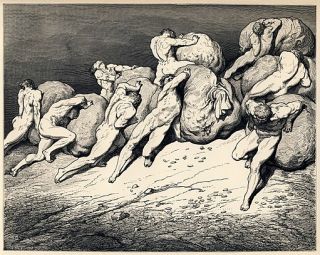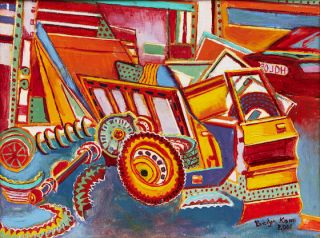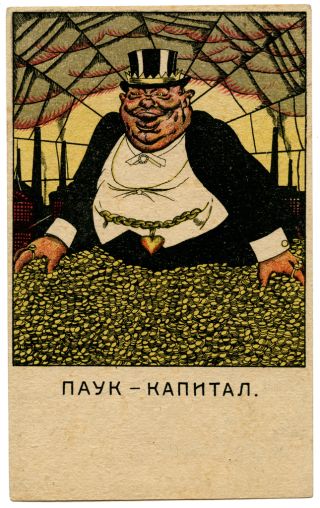Psychiatry
Understanding Hoarders
Recognized for centuries, but only recently called a disorder.
Posted January 2, 2023 Reviewed by Michelle Quirk
Key points
- Hoarding involves excessive accumulation and an inability to discard possessions, including useless items like trash.
- Though hoarding behavior has been described for centuries in literature, only since 2013 has it been named a psychiatric disorder.
- Hoarders live amidst squalor that compromises living space, creates a fire hazard, and endangers themselves and those around them.

Nikolai Gogol’s protagonist Chichikov travels from one small village in mid-19th century Russia to another, systematically collecting the names of dead souls. These are serfs who have perished since the last census but remain on the roster of their landowners (Gogol, 1846). In a scheme to increase his wealth, Chichikov intends to purchase and use "them" to his advantage.
Among his sojourns, Chichikov visits the affluent Plushkin, who is still required to pay taxes on 80 of his dead serfs and another 78 unaccountable runaways. Plushkin is only too willing to sell the lot, which becomes an unexpected windfall for Chichikov.

In contrast to the methodical collector Chichikov, though, Plushkin is disheveled, dressed like a beggar in torn and filthy clothing, and surrounds himself with “an extraordinary mess... a spectacle of untidiness.” The room “reeked of a tomb” and was cluttered with cobweb-covered broken furniture and tools, a dirty glass with dead flies, an "antiquated soul of a shoe," piles of manuscripts and rags, a chandelier "so encrusted with dust that it looked like a cocoon enclosing a caterpillar,” and an old piece of moldy cake.
Gogol provides a textbook description of a hoarder: Plushkin seems unable to discard anything, including a used toothpick with which he had cleaned his teeth "at least before the coming of the French to Moscow."
"Senile squalor," with a tendency to "hoard rubbish," has even been referred to as "Plushkin's syndrome" (Cybulska, 1998).

Hoarding traits have been described in the literature for years (Chang and Sekar, 2022). For example, 14th-century Dante describes hoarders in his Inferno, situating them with "The Wasters," in the Fourth Circle of Hell (Canto VII): "... they strained their chests against enormous weights, and with mad howls, rolled them at one another... shouting, 'Why do you hoard?' and the other, 'Why do you waste?'... they were so skewed and squint-eyed in their minds...being miserly or extravagant mocked all reason."
For another artistic rendition of Dante's "Hoarders and Wasters," see the reference in my bibliography to the lithograph in NYC's Museum of Modern Art by American painter Robert Rauschenberg.
Though the "behavioral predisposition" to acquire huge quantities of food and other useful items (e.g., tools) may have had an evolutionary survival advantage in times of scarcity (Anderson et al., 2005), hoarding is now clearly recognized as an affliction.

Originally considered a manifestation of obsessive-compulsive disorder, hoarding became a clinically distinct diagnosis in its own right, though under the class of obsessive-compulsive and related disorders, in our psychiatric Diagnostic and Statistical Manual, Fifth Edition (DSM-5, 2013). Not attributable to another medical condition, it is characterized by chronic, persistent difficulty and significant distress in discarding possessions, regardless of their value.
Up to 90 percent of hoarders excessively and indiscriminately accumulate unnecessary, often useless objects, including trash (DSM-5). As a result, clutter impairs living space, compromises safety, creates a potential fire hazard, and negatively affects social and family relationships and even personal health. The cause of hoarding disorder has not yet been determined (Hombali et al., 2019).
The prevalence of hoarding disorder varies from 2.3 percent to more than 5 percent (Dozier and Ayers, 2017), and the symptoms worsen as the hoarder ages. There are no consistent gender differences, but there may be a genetic component, as evidenced by twin studies (Dozier and Ayers). Studies of prevalence often use different assessment methods, including self-report (Postlethwaite et al., 2019; Ong et al., 2021).

“We regard our possessions as parts of ourselves… we are what we have” (Belk, 1988). Objects can be “magnifying glasses for memories” and “condensed symbols” (Rubinstein, 1987). As we age, they can represent important connections to other people, both from the past and the present. Cherished items have been called “a narrative scaffolding” that creates “a personal and durable sense of identity” (Price et al., 2000).
Those who hoard, though, develop emotional attachments to objects that are disabling, maladaptive, and clearly pathological (Moulding et al., 2021). For them, there is a discrepancy or incongruity between the public meaning of objects and their own private, idiosyncratic meanings (Richins, 1994). Sometimes, they even anthropomorphize them—i.e., give them human characteristics (Dozier and Ayers).
When the hoarder accumulates animals in conditions of neglect and poor hygiene, "with unstopped reproduction," some have referred to this behavior as the "Noah syndrome" (Abreu and Marques, 2022; though it seems a misnomer since Noah seemed fairly disciplined in limiting his ark to two animals of each kind!).
There are inconsistencies in studies of neurocognitive functioning in those who hoard. Some studies found deficits in executive functioning, including decision-making, difficulty in categorization and organization, and a lack of inhibition (Dozier and Ayers).

More recently, a systematic comparison of 22 studies has found impairment only in categorization skills but not in decision-making, inhibition, memory, mental flexibility, and attention (Stumpf et al., 2022). The researchers, though, concede there were limitations. For example, sample sizes were small and consisted of patients rather than the general population. Further, they were not matched for age or education, the tests used to assess cognitive functioning were different, and there was insufficient information on co-morbidities, medication use, or even demographic variables (Stumpf et al.).
Evidence of abnormalities in the brain regions of those who hoard "remains inconclusive." There is a suggestion that there is "lower metabolism" in the posterior cingulate and occipital cortex areas (Hombali et al.).
Sometimes a fine line exists between excessive collecting and actual hoarding. (For more on the difference, see my previous article on collecting.)

The distinction blurs in William Davies King's poetic description of his own compulsive behavior: "It is full of emptiness. It is a collection of nothing." Though King is systematic, he collects useless items, such as labels from canned goods: the "detritus, picked up, stashed... scraps and pieces" that he spends hours organizing into scrapbooks to "at least avoid landfill." Writes King, "... there is little inherent beauty in these bits and pieces. Instead there is often an echo of an aggravating, noisy, cluttered world... it is a celebration of material culture wrapped around a contempt for material culture" (King, 2008).
Most hoarders are far less eloquent, and many have considerably less insight into their disorder. Amidst their spectacle of untidiness, though, they suffer greatly and cause suffering in those with whom they live.
Facebook/LinkedIn image: MCarper/Shutterstock
References
Abreu LM; Marques JG. Noah Syndrome: a review regarding animal hoarding with squalor. Innovations in Clinical Neuroscience 19(7-9): 48-54, 2022.
Alighieri D. The Divine Comedy: The Inferno, The Purgatorio, and the Paradiso. (Canto VII, Circle Four, The Hoarders and the Wasters), Translated by J. Ciardi. New York: New American Library, a division of Penguin Group (USA), Inc., pp. 60-66, 1970.
American Psychiatric Association. Diagnostic and Statistical Manual of Mental Disorders, Fifth Edition (DSM 5). Washington: American Psychiatric Association Publishing, 2013.
Anderson SW; Damasio H; Damasio AR. A neural basis for collecting behaviour in humans. Brain 128(1): 201-212, 2005.
Belk RW. Possessions and the extended self. Journal of Consumer Research 15: 139-168, 1988.
Chang RA. Sekar V. Historical portrayal of hoarding disorder in European literature and its relationship to the economic and personal circumstances of the authors. Cureus 14(11): e31025 (six pages), 2022.
Cybulska E. Senile squalor: Plyushkin’s not Diogenes’ syndrome. Psychiatric Bulletin 22: 319-20, 1998.
Dozier ME; Ayers CR. The etiology of hoarding disorder. Psychopathology 50(5): 291-296, 2017.
Gogol N. Dead Souls (1842). Translated by C.J. Hogarth. New York: First Warbler Press Edition, pp. 93-103, 2022.
Hombali A. et al. A narrative synthesis of possible causes and risk factors of hoarding behaviours. Asian Journal of Psychiatry 42: 104-114, 2019.
King WD. Collections of Nothing. Chicago: The University of Chicago Press, 2008.
Moulding R; Kings C; Knight T. The things that make us: self and object attachment in hoarding and compulsive buying-shopping disorder. Current Opinion in Psychology 39: 100-104, 2021.
Ong CW et al. A systematic review and psychometric evaluation of self-report measures for hoarding disorder. Journal of Affective Disorders 290: 136-48, 2021.
Postlethwaite A; Kellett S; Mataix-Cols D. Prevalence of hoarding disorder: a systematic and meta-analysis. Journal of Affective Disorders 256: 309-316, 2019.
Price LL; Arnould EJ; Curasi CF. Older consumers’ disposition of special possessions. Journal of Consumer Research 27(2): 179-201, 2000.
Rauschenberg R. Canto VII: Circle Four: The Hoarders & Wasters, a lithograph, 1959-60 (From the series Thirty-Four Illustrations for Dante’s Inferno. Museum of Modern Art. https://www.moma.org/collection/works/36750. (Retrieved, 12/11/22).
Richins ML. Valuing things: the public and private meaning of possessions. Journal of Consumer Research 21(3): 504-521, 1994.
Rubinstein RL. The significance of personal objects to older people. Journal of Aging Studies 1(3): 225-238.
Stumpf BP et al. Cognitive impairment in hoarding disorder: a systematic review. CNS Spectrums, April 28; online ahead of print: 1-13, 2022.




